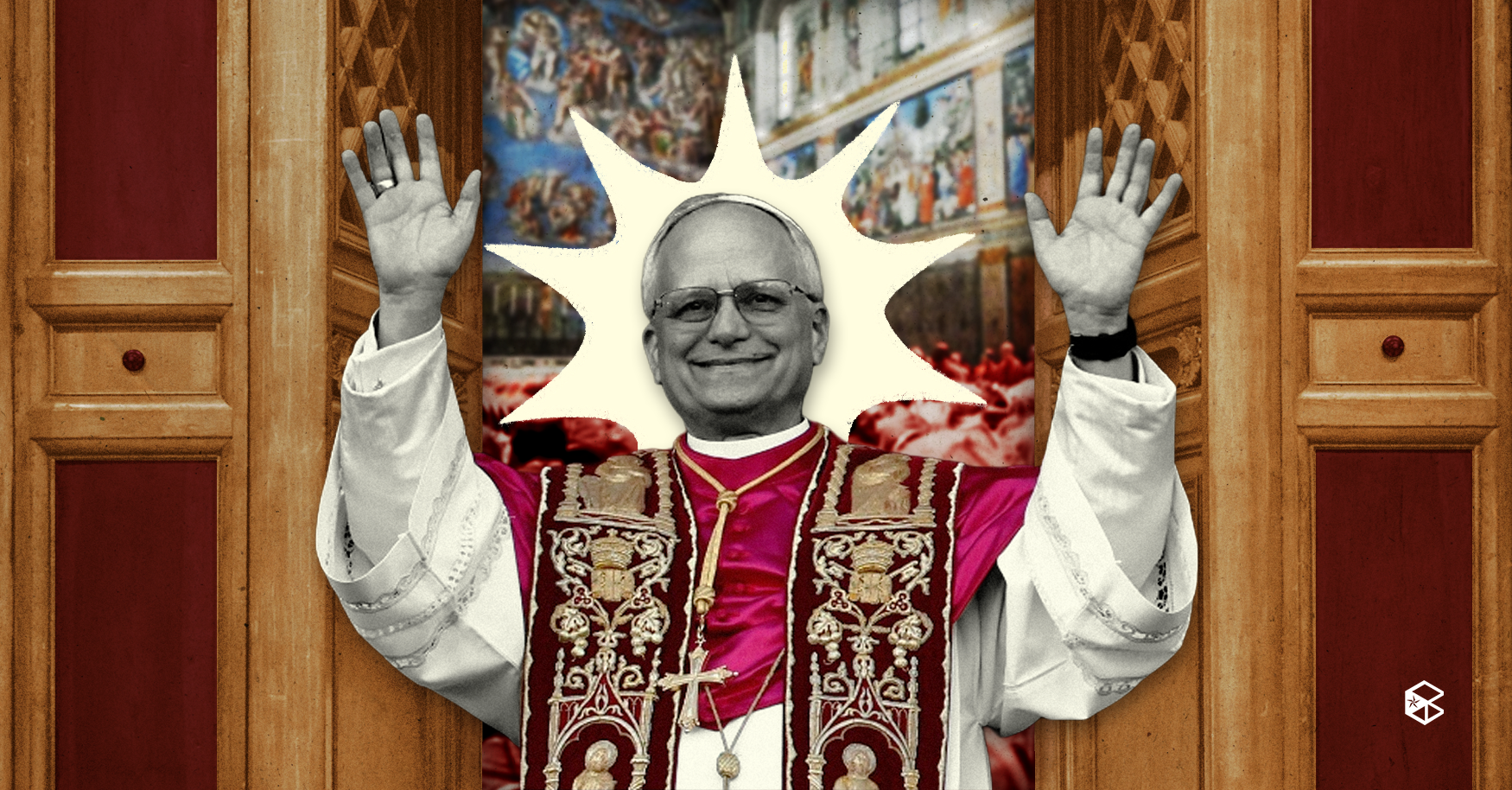Following the passing of Pope Francis on April 21, the 133-member College of Cardinals convened at the Sistine Chapel on May 8 for a conclave that concluded a day after with the election of Cardinal Robert Francis Prevost, now known as Pope Leo XIV.
In an interview prior to the conclave, then Cardinal Prevost said, “To be a good bishop means to be a good pastor, means to be able to accompany the people of God and to live close to the people of God, not to be isolated.”
Who was Bishop Robert Prevost?
In Chiclayo, locals there have fond memories of Pope Leo XIV, that cheers filled the streets and bells rang at the announcement of his papacy. He also did not forget them in his first words, greeting “all those… in a particular way, to my beloved Diocese of Chiclayo, in Peru.”
Born in Chicago, Illinois on Sept. 14, 1955, his parents were of Spanish and Italian descent. He speaks English, Spanish, Italian, French, and Portuguese, and also reads Latin and German. He also has a degree in Mathematics from Villanova University.
He made his solemn profession on August 29, 1981, obtained a licentiate in Theology from the Catholic Theological Union in Chicago, and was ordained a priest in Rome on June 19, 1982.
In service to the Church, he led the Order of St. Augustine from 2001 to 2007. In 2015, Pope Francis sent him back to Peru to serve as administrator and later as archbishop of Chiclayo. In 2023, Francis made Prevost a cardinal and appointed him to lead the Pontifical Commission for Latin America in the Vatican.
Immigration, church abuse, and LGBTQIA+ stances
Pope Leo XIV is known to share an advocacy for the poor and migrants with Francis. He reposted on his X account articles criticizing the U.S. President Donald Trump and Vice President J.D. Vance on immigration and mass deportation.
Prevost previously told Italian news Rai that his family were immigrants, "I was born in the United States... But my grandparents were all immigrants, French, Spanish… I was raised in a very Catholic family, both of my parents were very engaged in the parish."
After his election, allegations flooded social media accusing him of covering up sexual abuse cases involving a Peruvian priest in 2022. These claims have been cleared up by Peruvian reporters Pedro Salinas and Paola Ugaz, who stated that the allegations were completely false and Prevost was a strong ally in bringing the cases directly to Pope Francis, leading to the dissolution of the Sodalitium Christianae Vitae movement due to sexual abuse.
In 2019, he told Peruvian newspaper La Republica, “We reject cover-ups and secrecy” and urged them to come forward, “if they have suffered or are victims of the wrongdoing of a priest, they should come and report it, so we can act for the good of the Church, the person, and the community.”
In 2012, Prevost condemned the "homosexual lifestyle," abortion, and "alternative families composed of same-sex partners and their adopted children." However, when he was made cardinal in 2023, he told a reporter that his views had evolved under Francis.
“Given many things that have changed, I would say there’s been a development in the sense of the need for the church to open and to be welcoming,” he stated, “And on that level, I think Pope Francis made it very clear that he doesn’t want people to be excluded simply on the basis of choices that they make, whether it be lifestyle, work, way to dress or whatever.”
Continuing, he said the church is “looking to be more welcoming and more open, and to say all people are welcome in the church.”
Quo nomine vis vocaris?
The tradition of choosing a papal or pontifical name started in 533 AD as a symbol of the spirit and direction the new pope wishes his papacy to follow. Upon reaching the two-thirds majority, the elected pope is asked a Latin phrase which translates to "By what name do you wish to be called?"
The last pope to take the name Leo was Pope Leo XIII, known as the “Pope of the Workers” for his encyclical on social justice. While Saint Leo the Great wrote the 1899 encyclical Testem benevolentiae nostrae that condemned adapting the Church too closely to American culture.
This historical context could be significant to Leo XIV’s choice, as thousands of immigrants in the United States are in danger of President Trump’s aggressive policies against illegal immigration.
Although these connections haven’t been personally confirmed by the pope himself, his brother John Prevost told CNN that perhaps his brother “sees the United States is headed in the wrong direction in terms of immigration, that this is a total injustice.”
The spirit of conclave
The 2025 papal conclave is the secretive process of choosing a new pope guided by the apostolic constitution Universi Dominici Gregis.
After the pope has been chosen via two-thirds majority, the pontiff will emerge on the balcony of Saint Peter to offer his blessings.
From the balcony, Pope Leo XIV called on the faithful to become “a missionary Church” that “builds bridges and encourages dialogue,” while asking for prayers as he embraces the responsibility of leading the world’s largest Catholic Church.
And on his first Sunday address on May 11, he called for a ceasefire and humanitarian aid in Gaza, Ukraine, and a lasting agreement between India and Pakistan.


